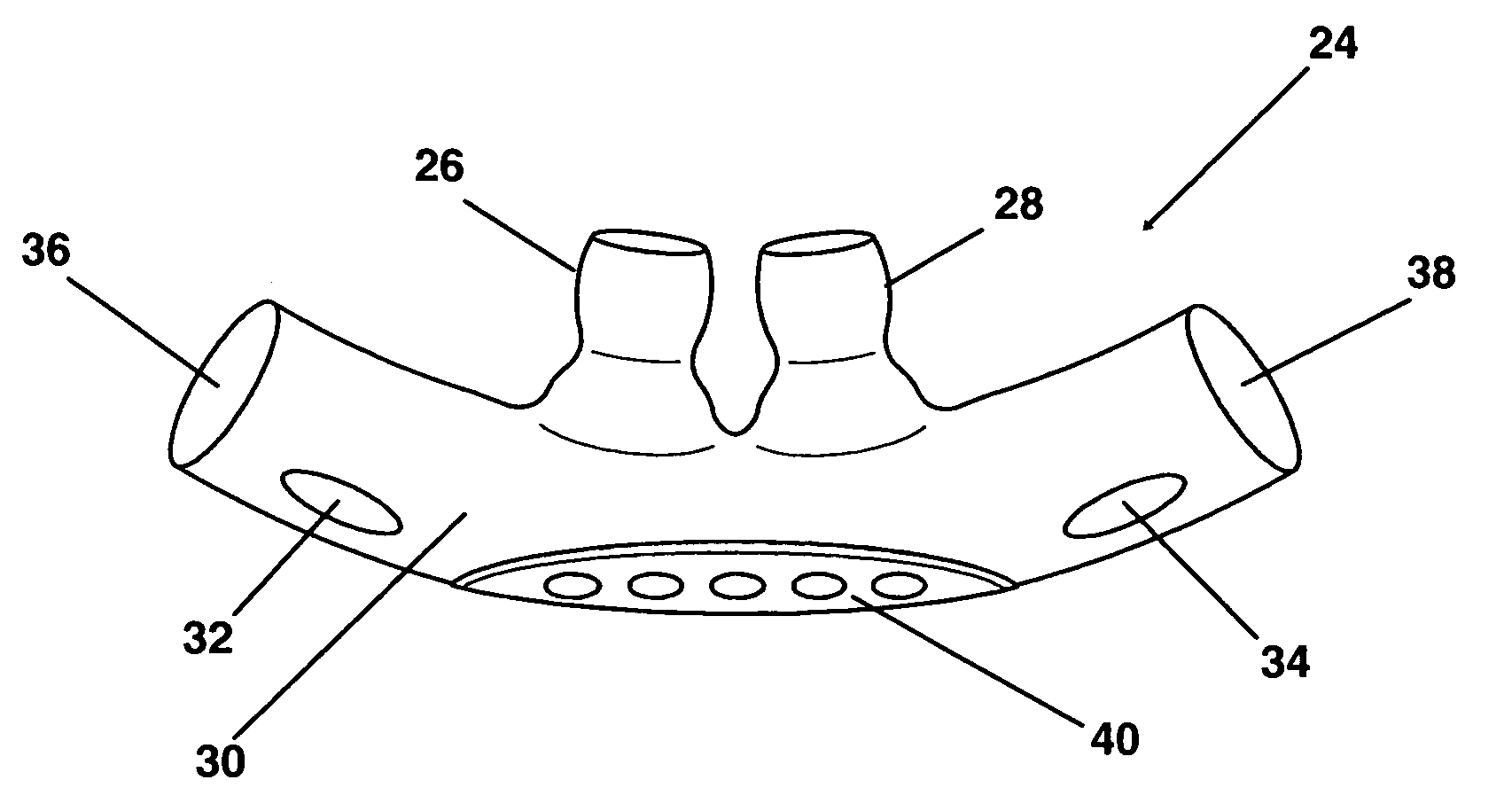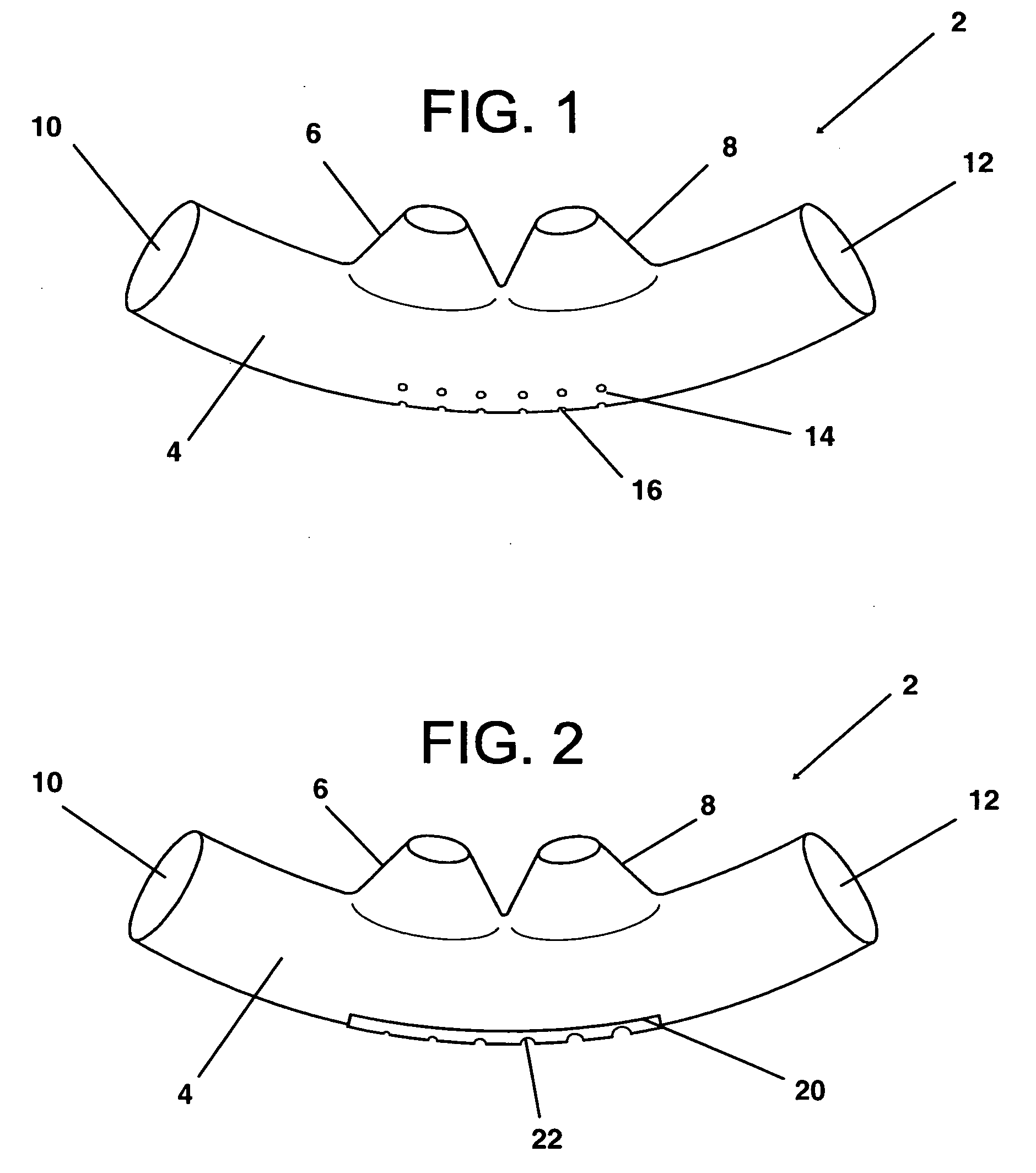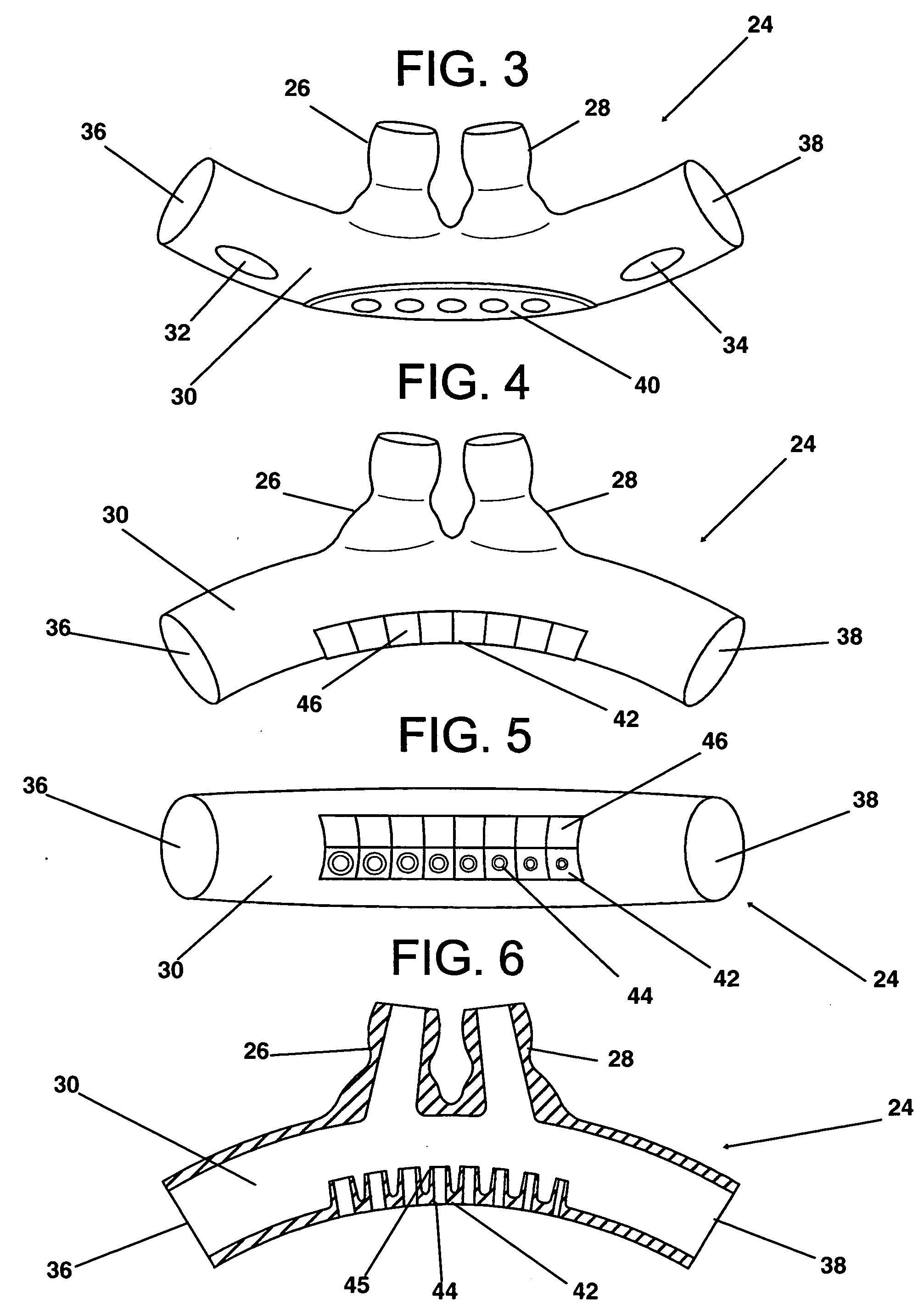Ventilation interface
a technology of ventilation interface and ventilation device, which is applied in the field of ventilation device, can solve the problems of general discomfort of wearer, excessive noise, and potentially lethal sleep apnea
- Summary
- Abstract
- Description
- Claims
- Application Information
AI Technical Summary
Benefits of technology
Problems solved by technology
Method used
Image
Examples
Embodiment Construction
[0019] In an exemplary embodiment of the invention, a conventional ventilation interface for the application of positive air pressures is coupled with a variety of different styles of nasal inserts and a variety of different styles of exhaust ports. The nasal inserts may be formed in a one-size fits all style and may be retained in the nares of a user through friction or lateral pressure of gas flow. Additionally, the ventilation interface may have one or more exhaust ports disposed on the bottom of the interface, and the one or more exhaust ports may have adjustable apertures.
[0020] In another embodiment of the invention, a ventilation interface comprising a hollow cannula and having a pair of nasal inserts is again disclosed. The bottom wall of the cannula, however, may contain only one exhaust port or a series of exhaust ports. The exhaust ports may have an adjustable flow rate.
[0021] In another embodiment of the invention, the nasal inserts disposed on an upper wall of a cannu...
PUM
 Login to View More
Login to View More Abstract
Description
Claims
Application Information
 Login to View More
Login to View More - R&D
- Intellectual Property
- Life Sciences
- Materials
- Tech Scout
- Unparalleled Data Quality
- Higher Quality Content
- 60% Fewer Hallucinations
Browse by: Latest US Patents, China's latest patents, Technical Efficacy Thesaurus, Application Domain, Technology Topic, Popular Technical Reports.
© 2025 PatSnap. All rights reserved.Legal|Privacy policy|Modern Slavery Act Transparency Statement|Sitemap|About US| Contact US: help@patsnap.com



